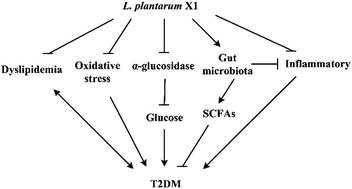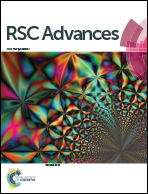Lactobacillus plantarum X1 with α-glucosidase inhibitory activity ameliorates type 2 diabetes in mice
Abstract
The cell-free supernatant of Lactobacillus plantarum X1 showed potential antidiabetic ability by inhibition of α-glucosidase activity in vitro. Oral administration of L. plantarum X1 was found to ameliorate hyperglycemia, glucose tolerance, insulin resistance, hormone levels, and lipid metabolism. And then L. plantarum X1 also partially increased the antioxidant capacity and ameliorated cytokine secretion and pancreatic damage in type 2 diabetic mice. In addition, L. plantarum X1 recovered the levels of acetic acid and elevated the levels of butyric acid in the feces of mice with diabetes markedly. In addition, type 2 diabetic mice with treatment of L. plantarum X1 showed an increase in the abundance of Bacteroidetes and a decrease in the proportion of Firmicutes, as well as an enrichment of butyrate-producing bacteria. These results demonstrated that L. plantarum X1 had the potential ability to ameliorate type 2 diabetes and the hypoglycemia ability were tightly associated with compositional changes in short-chain fatty acids and gut microbiota.


 Please wait while we load your content...
Please wait while we load your content...